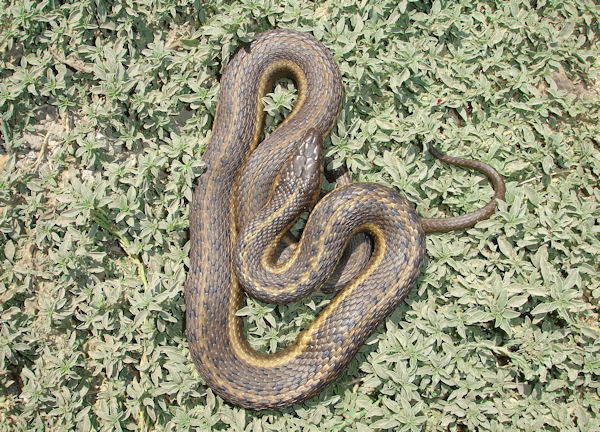CSP publishes two papers on occupancy modeling—one that looks at optimal sampling methods and another that predicts the types of areas the giant gartersnake is most likely to inhabit.
Occupancy modeling is frequently used to study the spatial distributions of species — in other words, to determine why species occur in some locations but not others. In one recent study, CSP’s Rick Scherer and Brett Dickson collaborated with colleagues from universities, federal agencies, and private organizations to evaluate the field methods used to collect data for avifaunal occupancy models. In another, they used an occupancy model to evaluate the spatial distribution of a threatened species, the giant gartersnake (Thamnophis gigas).
#1—A look at sampling methods for occupancy studies
When designing occupancy studies, researchers must make decisions about the duration of sampling so they can allocate resources as effectively as possible, since increasing sampling duration reduces the number of sampling locations. Point-count data are often used to estimate occupancy for birds. Our study found that estimates of occupancy probability did not differ when based on data from 5- and 8-minute point counts; however, estimates from the 8-minute point counts had lower uncertainty. Therefore, 8-minute point counts are generally recommended, although the available resources for the study and aspects of the focal species’ ecology should be considered before implementing a particular design. Learn more about this effort here: Effects of point-count duration on estimated detection probabilities and occupancy of breeding birds
#2—Predicting occupancy for the giant gartersnake

The giant gartersnake is endemic to California’s Great Central Valley, an area that has been heavily modified over that last 150 years. This study used occupancy models to study the spatial distribution of these snakes and found that populations are more likely to occupy areas with high densities of canals, lower elevations, and particular types of soil. The model outputs were used to predict occupancy at a spatial resolution and extent that addresses the needs of land managers in the Valley. Learn more about this study here: Relations between Environmental Attributes and Contemporary Occupancy of Threatened Giant Gartersnakes (Thamnophis gigas)

